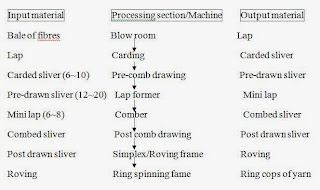Mixing: Mixing could be thought of combining of fibres together in somewhat haphazard proportion whose physical properties are partially known so that, the resultant mixture has only generally known average physical properties which are not easily reproducible.
Blending: Blending is based on the measurement of important fibre properties i.e, length, strength, cleanliness, e.t.c. Quantatively proportioning and combining the compatiable properties of the resultant blend can be predicted and reproducible.
Importance of mixing and blending:
- To give the required characteristics to the end product.
- To compensate for variation in the characteristics of the raw mtls.
- To hold down raw material cost.
- To achieve uniform quality.
- To use waste cotton in mixing.
- To meet functions and end use requirements.
Lint: The seed free cotton which is gotten after ginning is called ginning.
Linters: After ginning some short fibres are remained with the surface of the cotton seed which is called linters.
Bale management: The choice of cotton bales according to the fibre characteristics in order to achieve acceptable and economical processing condition and a constant yarn quality is called bale management.
Objects of bale management:
- An evening out of the quality characteristics of a yarn.
- A mean of avoiding quality jumps.
- A possibility of reducing cost as a result of an improved knowledge of the fibre characteristics.











